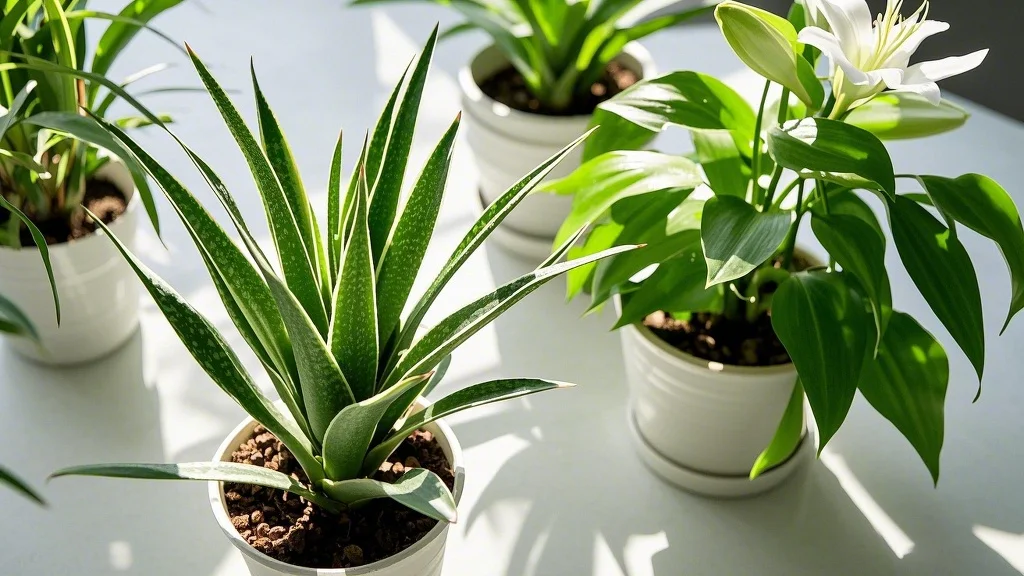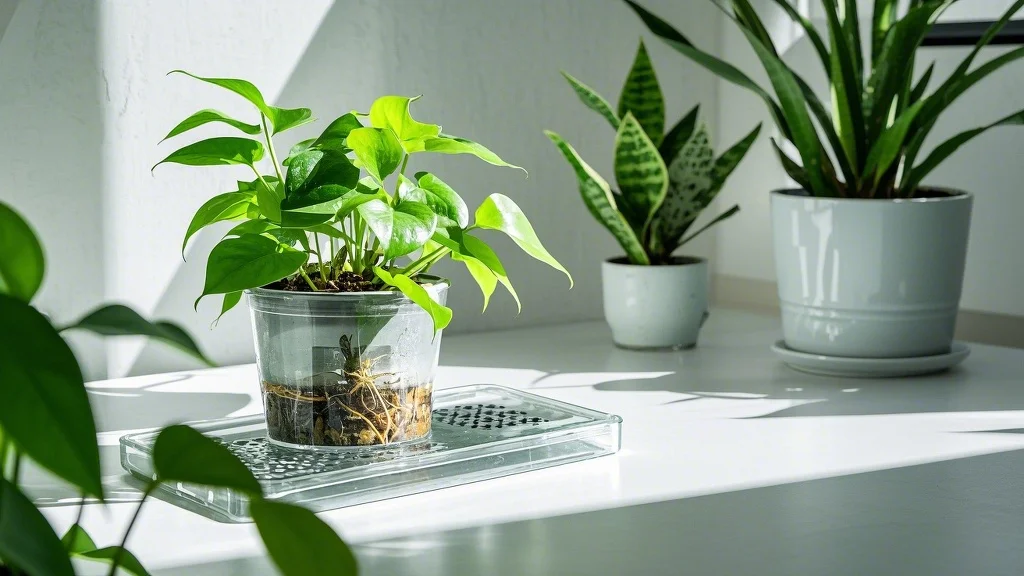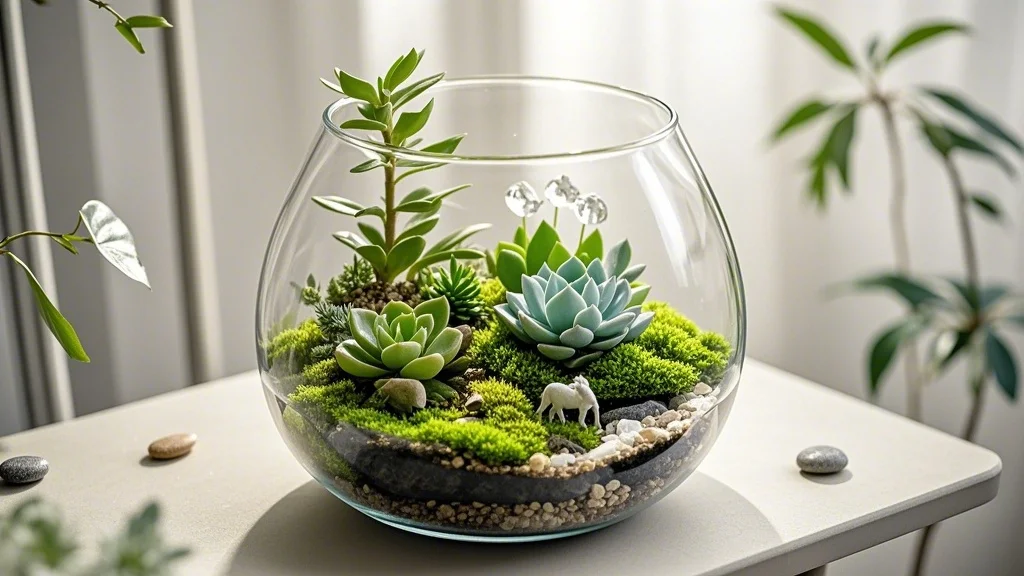Office plants do more than just brighten up your workspace. These green companions have been proven to reduce stress, increase productivity, and improve air quality in workplace environments. However, caring for plants in an office setting presents unique challenges: inconsistent temperatures, artificial lighting, weekend neglect, and varying humidity levels can all impact plant health.
This comprehensive guide will walk you through everything you need to know about selecting, placing, and maintaining thriving office plants, even with the constraints of a busy work schedule.
Contents
- 1 Choosing the Right Office Plants
- 2 Understanding Office Lighting Challenges
- 3 Watering Strategies for Office Plants
- 4 Temperature and Humidity Considerations
- 5 Feeding and Soil Health
- 6 Pest Prevention and Management
- 7 Seasonal Care Adjustments
- 8 Creating an Office Plant Community
- 9 Ergonomic and Aesthetic Placement
- 10 Conclusion
- 11 Quick Reference: Office Plant Care Checklist
Choosing the Right Office Plants

Low-Maintenance Champions
The first rule of successful office plant care is selecting species that can tolerate office conditions:
- Snake Plants (Sansevieria): Nearly indestructible, these upright plants tolerate low light and irregular watering.
- ZZ Plants (Zamioculcas zamiifolia): With glossy leaves and a forgiving nature, ZZ plants can survive weeks without water.
- Pothos (Epipremnum aureum): These trailing plants adapt to various light conditions and forgive occasional neglect.
- Peace Lilies (Spathiphyllum): While they prefer consistent moisture, they dramatically droop before damage occurs, giving clear signals when thirsty.
- Chinese Evergreen (Aglaonema): These colorful plants thrive in low to medium light with minimal care.
Matching Plants to Office Conditions
Different areas of your office may support different types of plants:
- For windowless spaces: Snake plants, ZZ plants, and pothos can survive with just fluorescent lighting.
- For bright reception areas: Fiddle leaf figs, rubber plants, and bird of paradise add dramatic flair.
- For desktop placement: Small succulents, air plants, and compact varieties like peperomia fit perfectly.
- For air purification: Spider plants, peace lilies, and rubber plants are particularly effective at removing indoor air pollutants.
Understanding Office Lighting Challenges
Types of Office Lighting
Office plants must adapt to lighting conditions quite different from their natural habitats:
- Fluorescent lighting: While plants can survive under fluorescent lights, they typically need 14-16 hours of exposure to compensate for the lower intensity.
- LED lighting: Modern office LED lights can support plant growth if they provide full-spectrum light.
- Natural light through windows: The best option, but remember that glass filters UV rays and reduces light intensity.
- North-facing windows: Provide gentle, indirect light suitable for shade-loving plants.
- South-facing windows: Offer the brightest light, though blinds may be needed to prevent leaf burn.
Supplemental Lighting Solutions
For offices with inadequate natural light:
- Desktop grow lights: Small LED grow lights can provide supplemental light for individual plants.
- Full-spectrum bulbs: Replace standard bulbs in desk lamps with full-spectrum alternatives.
- Light rotation: Move plants to brighter locations periodically if possible.
Watering Strategies for Office Plants

Establishing a Watering Schedule
Inconsistent watering is the leading cause of office plant death:
- Assign responsibility: Designate a plant caretaker or create a rotation schedule among colleagues.
- Calendar reminders: Set recurring calendar invites for watering days.
- Water monitoring tools: Consider moisture meters for more precise watering.
Weekend Care Solutions
Plants don’t take weekends off, even if you do:
- Self-watering planters: These containers have reservoirs that slowly release water.
- Water wicking systems: DIY solutions using cotton rope can draw water from a container to your plant.
- Water bulbs/globes: These slowly release water over several days.
- Friday deep watering: Give plants a thorough watering before leaving for the weekend.
Proper Watering Techniques
Quality matters as much as quantity:
- Check before watering: Insert your finger 1-2 inches into the soil; water only if it feels dry.
- Bottom watering: Place pots in a tray of water for 15-30 minutes to encourage deep root growth.
- Drainage is essential: Ensure all pots have drainage holes and saucers to catch excess water.
- Water temperature: Use room temperature water to avoid shocking plant roots.
Temperature and Humidity Considerations
Managing Office Climate Fluctuations
Offices often experience temperature swings that can stress plants:
- Avoid vents: Keep plants away from heating and air conditioning vents.
- Window placement caution: Windows can create cold drafts in winter and heat stress in summer.
- Weekend temperature changes: Be aware that office temperatures may be set differently on weekends.
Increasing Humidity in Dry Office Environments
Modern offices typically have low humidity levels:
- Grouping plants: Placing plants close together creates a microclimate with higher humidity.
- Pebble trays: Place pots on trays filled with water and pebbles (keeping the pot above water level).
- Occasional misting: For tropical plants, though this provides only temporary relief.
- Desktop humidifiers: Small humidifiers can benefit both plants and humans in dry office environments.
Feeding and Soil Health
Fertilizing Office Plants
Plants in containers need nutrient replenishment:
- Slow-release fertilizers: Apply once every 3-6 months for hassle-free feeding.
- Liquid fertilizers: Diluted to half-strength, applied monthly during growing season.
- Seasonal adjustments: Reduce or eliminate fertilizer during winter months when growth slows.
Soil Maintenance
Healthy soil means healthy plants:
- Annual repotting: Spring is ideal for refreshing soil and checking root health.
- Soil aeration: Gently loosen compacted soil with a fork or chopstick.
- Quality potting mix: Use commercial indoor plant mixes rather than garden soil.
- Mulching: A thin layer of decorative stones or preserved moss helps retain moisture.
Pest Prevention and Management
Common Office Plant Pests
Office environments aren’t immune to pest problems:
- Spider mites: Thrive in dry conditions, creating fine webbing on plants.
- Mealybugs: Appear as white, cottony clusters in leaf joints.
- Fungus gnats: Small flying insects that emerge when soil stays too wet.
- Scale insects: Look like small bumps on stems and leaves.
Natural Pest Control Methods
Office-friendly solutions that avoid harsh chemicals:
- Insecticidal soap: Safe for office use, effective against most common pests.
- Neem oil: Natural deterrent that can be applied during non-work hours.
- Alcohol wipes: For spot-treating mealybugs and scale.
- Yellow sticky traps: Discreet way to monitor and reduce flying pest populations.
- Regular inspection: Check new plants thoroughly before introducing them to your office.
Seasonal Care Adjustments
Winter Care
Shorter days and heating systems create challenges:
- Reduced watering: Most plants need less frequent watering in winter.
- Humidity support: Heating systems dry out air, so increase humidity measures.
- Light supplementation: Consider grow lights during dark winter months.
- Temperature fluctuations: Be mindful of cold drafts from windows and doors.
Summer Considerations
Summer brings its own set of challenges:
- Increased watering: Higher temperatures may necessitate more frequent watering.
- Vacation coverage: Arrange plant care during summer vacation periods.
- Air conditioning issues: Protect plants from direct cold air streams.
- Growth spurts: Summer often brings active growth requiring more nutrients.
Creating an Office Plant Community
Building Colleague Engagement
Office plants thrive with collective care:
- Plant care rotation: Create a shared calendar for watering and maintenance tasks.
- Plant identification labels: Include care instructions for when you’re away.
- Plant appreciation events: Host lunch-and-learn sessions about plant benefits.
- Plant swaps: Organize cuttings exchanges to diversify office greenery.
Troubleshooting Together
Collaborative problem-solving improves plant health:
- Shared photo documentation: Track plant progress and identify issues early.
- Care journal: Keep a simple log of watering, fertilizing, and observations.
- Resource library: Compile care guides specific to your office plants.
Ergonomic and Aesthetic Placement
Strategic Positioning
Thoughtful placement benefits both plants and people:
- Biophilic design principles: Use plants to create visual connections to nature.
- Privacy screens: Taller plants can create natural dividers between workspaces.
- Focal points: Statement plants draw attention to gathering areas.
- Desktop considerations: Ensure plants don’t interfere with computer screens or work materials.
Container Selection
The right containers enhance both plant health and office aesthetics:
- Material considerations: Ceramic retains moisture longer than terracotta.
- Drainage solutions: Decorative outer pots can hide functional inner pots with drainage.
- Size appropriateness: Allow room for growth but don’t overwhelm desk space.
- Corporate branding: Consider containers that complement your office color scheme.
Conclusion
Office plants represent an investment in workplace wellbeing, connecting employees with nature even in the most urban environments. With thoughtful selection, strategic placement, and consistent care routines, your workplace greenery can thrive despite the unique challenges of office environments.
Remember that successful office plant care is often a community effort. By sharing responsibilities and knowledge, you’ll not only maintain healthier plants but also foster collaboration and environmental awareness among colleagues.
Whether you’re greening a personal cubicle or an entire corporate campus, these essential care strategies will help ensure your office plants remain vibrant contributors to a more productive, beautiful, and healthy workplace.
Quick Reference: Office Plant Care Checklist
- Weekly: Check soil moisture, remove dust from leaves, rotate plants for even light exposure
- Monthly: Inspect for pests, apply diluted fertilizer (during growing season)
- Quarterly: Trim dead or yellowing leaves, clean containers, check for root crowding
- Annually: Repot as needed, refresh soil, evaluate lighting needs
With these guidelines, even the busiest professionals can maintain thriving greenery that enhances the workplace environment for everyone.








